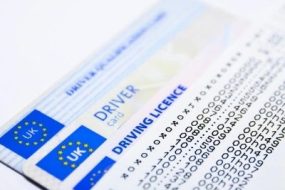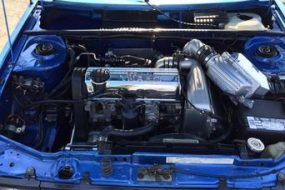
An emission test is a procedure done to ensure a vehicle meets the emission standards which are set by various government agencies around the world.
The test isn’t just about whether you pass or fail. It also involves how long it takes you to drive after starting your vehicle so that your emissions are at their lowest point. So how long to drive after reset computer to pass emission test?
You need to drive for about 100 miles to 200 miles after resetting the computer to complete your drive cycle and pass the emission test. Without the drive cycle completing and the computer relearning itself, you may not be able to pass the emission test.
What Is an Emission Test?
Emission testing is the process by which your vehicle’s emissions are tested to ensure that they meet or exceed certain standards. If a vehicle fails an emission test, it will not pass inspection and may be subject to penalties for failing to maintain required standards.
The most common reason for failure on an emissions test is poor maintenance of vehicles’ catalytic converters (CCs). While many people think that catalytic converters work like antifreeze in their car engines, they absorb harmful gases from burning fuel before sending them into the atmosphere through exhaust pipes.
How Long To Drive After Reset Computer To Pass Emission Test?
If you’re planning to drive after resetting your car’s computer, there are a few things you’ll want to keep in mind. First off, the vehicle must be driven for at least 100 miles before attempting an emission test.
This ensures that the computer has had time to reset and remove any old data from previous tests so they don’t affect future ones. This will give your transmission time to warm up again and get used to working again. It’s a must to complete a drive cycle before starting the emission test.
It’s also recommended that instead of driving right away after resetting your car’s computer, wait until you’re ready for this big step toward passing your emissions test!
What Happens If I Fail My Emission Test?
If you fail your emission test, you will receive a vehicle inspection report from the Department of Motor Vehicles (DMV).
This report will explain why your vehicle failed the test, which may include problems with the emissions equipment or possible maintenance issues.
You can fix most minor issues at home and then take it back to a certified mechanic for inspection before resubmitting it for another test.
If there is an approved repair plan in place with no additional testing required, then they may allow you to drive after passing this initial evaluation process by DMV staff at their discretion based on discretion being defined as “up to two weeks”
How Not To Fail My Emission Test
To not fail your emission test, ensure to:
1. Check Your Car
Make sure it’s in good working order, and that you don’t have any issues with the exhaust system or emissions equipment.
2. Check Your Tires
The wrong type of tire can cause a failure on the emissions test, so make sure they are safe for driving on public roads. Also, make sure your tires are properly inflated, it is one of the important criteria to pass the emission test.
3. Check for Engine Warning Light
Check the check engine light or service indicator lamp on your vehicle. If there’s no visible smoke coming out of the tailpipe when driving normally, then this indicates that something may be wrong with its emissions system.
However, it won’t necessarily lead directly to an emission failure if only one light is flashing, you should still check by looking for any other causes for concern first before deciding what needs fixing!
4. Check the Oil Filter
Clean up as much debris around oil filters as possible before taking apart an old oil filter housing that might otherwise contaminate them further; otherwise, try spraying some dish soap onto each section beforehand instead since these types tend to clean oil.
Importance Of Emission Test
The emission test is important because it helps make certain that cars do not pollute the environment more than they should when they are being driven on public roads.
The importance of emission tests can not be overemphasized as their major role is safety. Here are some valid reasons why an emission test is important:
- Personal And Public Safety: Emission tests are important for the sake of your car’s safety, as well as that of other drivers on the road. If a car has an emission test failure, it will be subject to a fine and may result in suspension or cancellation of driving privileges.
- To Meet Standards: The purpose of these tests is to ensure that vehicles meet certain standards regarding fuel efficiency and emissions to minimize environmental effects caused by their use.
- Good Car Condition: Your car is a necessary component of your daily life, but it’s also important to take time out every so often to ensure that it stays in good condition. An emission test will help determine whether your vehicle needs repairs before you can get back out there.
- Safe And Clean Environment: Emission tests are important for safety, as well as a cleaner environment. If you want to pass your emission test, you must do everything in your power to make sure the car is in good working order before taking it for the emissions test.
Conclusion
In conclusion, we can say that it all depends on the type of car and its driver. You should always follow the manufacturer’s recommendations regarding the best way to drive after a reset.
But, if you want to be safe while driving then make sure you invest in some kind of device that will let you know when your vehicle is emitting excessive CO2 levels.









